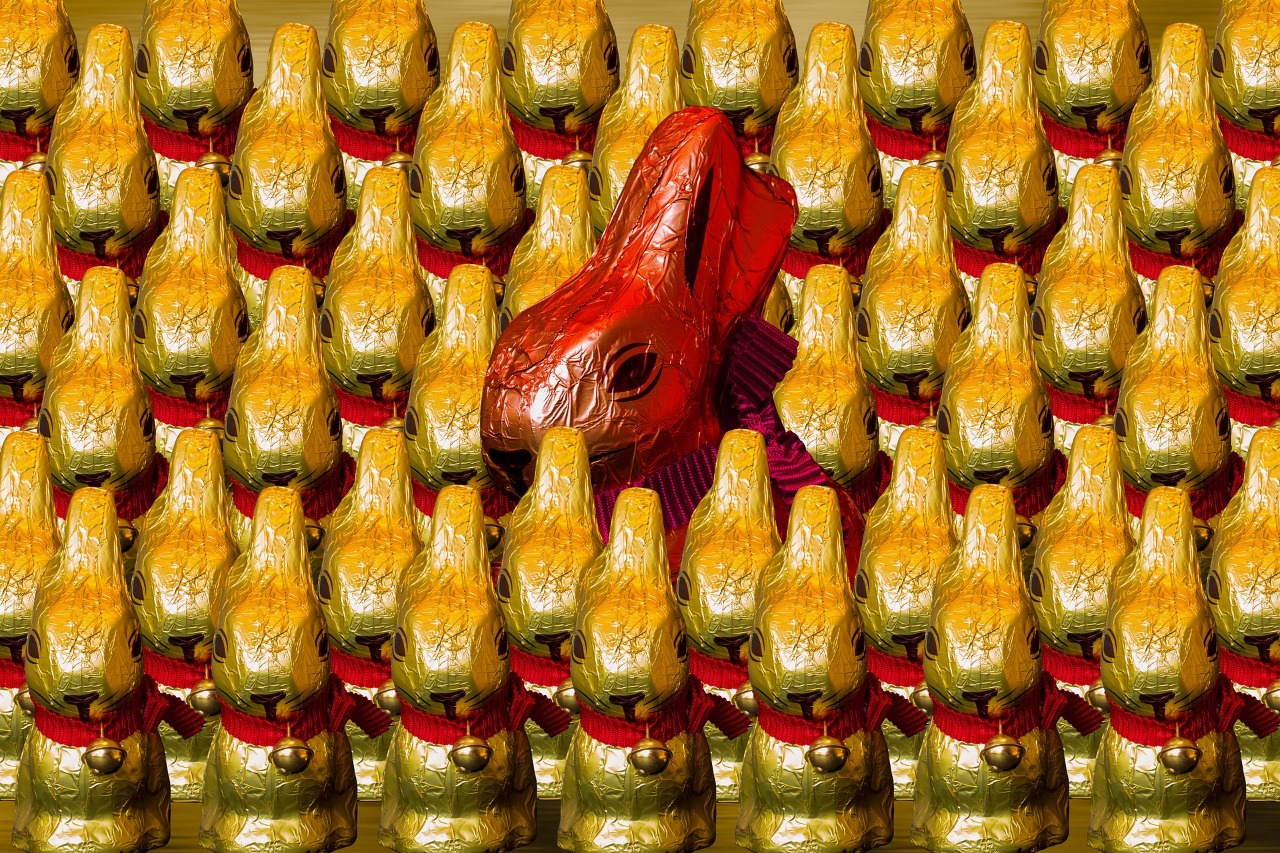Easter is coming! Stores are stacked full with candies, pastries and chocolate bunnies and eggs. Chocolatiers are doubling their production to meet the increasing demand. However, the hidden side of this event should not be ignored… Shall we ruin it all for you? Let’s face the facts.
Cultivation leading to deforestation
Cocoa plantation often requires a whole set of conditions to thrive, among which are large acres of land and an ideal climate to grow. Basically, the whole process revolves around developing and producing good pods, which are the berries that contain the cocoa beans. It is especially in the hot regions of the African continent that this kind of large-scale cultivation tends to be practiced. Here, we are most often referring to Ivory Coast and Ghana, which are the world’s leading producers and exporters of cocoa. These two countries alone represent 70% of the world cocoa trade. The cultivation then requires the exploitation of forests providing the raw materials needed for the big manufacturers to operate.
Hence the destruction of biodiversity: the natural habitat of many species is threatened, if not destroyed. Deforestation causes the exodus of animals which are also exposed to poaching, and the fate of plant species are often similar. We may also note that many natives who still live in these primary forests are also victims of this mass agricultural exploitation; exploitation at the origin of the plundering of their territory.
Harmful effects for health and the planet
Deforestation also leads to the emission and aggravation of the impact of greenhouse gases. Our planet needs to be reforested not only in quantity but also in diversity in order to protect it from the scourge of climate change and air pollution.
Among the other environmental impacts on human health: significant water requirements to the detriment of human consumption and the use of pesticides to stimulate the regrowth of cocoa trees. And we all know that those chemicals are highly carcinogenic.
Efforts undertaken for more ecological and equitable production
For several years, there has been an awareness of intensive and harmful production methods for the planet and for humans. Many measures have been taken, particularly against child labour. In fact, in 2020, there were still more than 1.56 million children aged 5 to 17 in a working situation on these cocoa plantations in Ivory Coast and Ghana alone. Today, the International Cocoa Initiative Foundation, among other things, has enabled a reduction of nearly 50% of those hazardous work among these identified children.
In addition, the major brands have also reacted with the adoption of certain labels to obtain a more “fair and sustainable” product. We are talking here, for example, of the Fairtrade Label, which promotes a fairer remuneration for cultivators.
Other measures had been put forward, in particular during the COP23 in 2017. Agroforestry, for example, consists of planting different species of trees within cocoa plantations. This agricultural technique is noteworthy in supporting the diversification of income and maintaining local biodiversity. Also, we have a final nod to the Cacao Forest Project, where the initiative is to achieve a balance between environmental protection and welfare of all the shareholders of the cocoa production chain (planters, NGOs, cocoa processors and pastry chefs).
What are the solutions?
Many argue that a significant reduction of the production by the main manufacturers would be the best way to go. Best maybe but is it realistic? Perhaps it is also an indication of the time to reflect on our little pleasures and reduce our overall chocolate consumption. As an indication, approximately 3 million tons of chocolate are marketed in the world every year. For example, in France, the average consumption now stands at 6.4 kg per year / inhabitant. A net increase when compared to the 4.3 kg of 2017. And it isn’t slowing down. The rate of consumption is an ever-increasing number and continues to be so with the ever-present “commercial” days such as Valentine’s Day or Mother’s Day. The best thing is to remember that chocolate represents a huge energy contribution of more than 500 calories per 100 grams, and that it is better not to abuse it.
Still for many people, chocolate and chocolate products are a staple of any sweet dishes, and a marker of luxury. It can represent romantic love; the love between a parent and child in the form of a stocking stuffer. Let’s not forget Halloween candies! Consumers appreciate its versatility as it can be found in pastries, breakfast foods and eaten on its own. The most fascinating aspect: it does not need to be of high quality to be seen as a luxury. Since chocolate will be here for years to come, let’s continue to enjoy it while finding ways to mitigate the nefarious consequences of its production. And above all, think local! There is a 100% Made in Moris chocolate, produced in Baie du Tombeau by the company Kakao Ti Gerard. You should try it! And most important of all, we wish everyone a Happy Easter!
